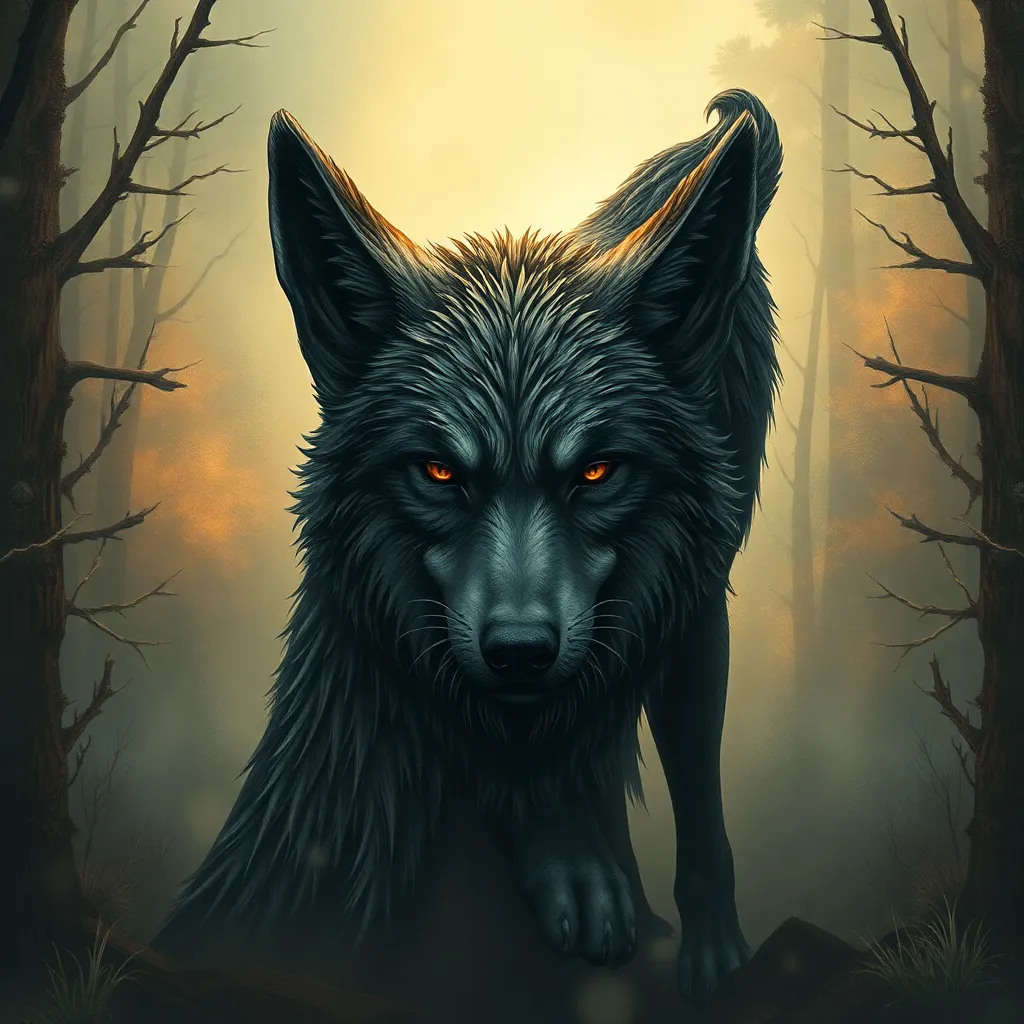The Wolf Pack: Examining the Role of Community and Belonging in Werewolf Myths
I. Introduction
Throughout history, werewolf myths have captivated the imagination across various cultures, presenting a unique blend of folklore, fear, and fascination. These narratives often revolve around the transformation of humans into wolves, symbolizing a duality that serves as a mirror to the complexities of human nature. Central to these tales is the theme of community and belonging, highlighting how the dynamics of social structures influence individual identities.
The purpose of this article is to delve into the intricate relationship between werewolf myths and the notions of community and belonging. By examining historical contexts, symbolism, and modern portrayals, we aim to uncover the deeper meanings embedded within these age-old stories.
II. Historical Context of Werewolf Myths
Werewolf legends can be traced back to ancient civilizations, where they often served as cautionary tales or explanations for human behavior. These myths emerged in various cultures, including:
- The Greek myth of Lycaon, who was transformed into a wolf as punishment by Zeus.
- The Norse sagas that describe warriors taking on the shape of wolves.
- The European witch trials, where accusations of lycanthropy were common.
As these legends evolved, the wolf became a powerful symbol within the context of community. Wolves, known for their pack behaviors, embodied traits that were both admired and feared by humans. They represented strength, loyalty, and the importance of social bonds, which resonated with the values of many ancient societies.
Folklore played a crucial role in shaping societal norms, often reflecting the fears and desires of the community. By exploring the werewolf mythos, we gain insights into the values and beliefs that governed these cultures.
III. The Symbolism of the Wolf Pack
In nature, wolf packs exhibit complex social structures that are characterized by cooperation, loyalty, and hierarchy. These traits make the wolf pack an apt metaphor for human social dynamics. Key characteristics of wolf packs include:
- Teamwork: Wolves hunt in groups, relying on each member to contribute to the success of the hunt.
- Loyalty: The bond between pack members is vital for survival, fostering deep connections.
- Hierarchy: Packs often have a clear structure, with an alpha pair leading the group.
In werewolf mythology, these characteristics are mirrored in human social structures, emphasizing the significance of community. The loyalty and protection exhibited within a wolf pack resonate with the human need for connection and belonging. Furthermore, the hierarchy seen in wolf packs can reflect societal structures, where individuals navigate their roles and relationships.
IV. Community Dynamics in Werewolf Tales
The relationship between werewolves and their human counterparts often explores themes of connection and estrangement. In many narratives, werewolves are depicted as individuals grappling with their dual identities, torn between their human emotions and the primal instincts of the wolf. This bond can manifest in various ways:
- Familial Bonds: Werewolves may maintain connections with their families, emphasizing themes of loyalty and protection.
- Pack Dynamics: The roles within werewolf communities highlight the importance of hierarchy and collaboration in achieving common goals.
- Isolation vs. Belonging: Many werewolf stories address the conflict between the desire for acceptance and the fear of rejection, illustrating the impact of social dynamics on individual identity.
These dynamics underscore the essential human need for belonging, often leading to tragic outcomes when isolation prevails over community.
V. Psychological Implications of Belonging
At the core of werewolf myths lies the human need for community. These stories often reflect psychological themes related to identity, transformation, and acceptance. The transformation into a werewolf can symbolize:
- Duality: The struggle between civilized behavior and primal instincts.
- Acceptance: The desire to be part of a community, even at the cost of one’s humanity.
- Rejection: The fear of being ostracized or misunderstood, leading to internal conflict.
The psychological interpretations of these transformations reveal how deeply rooted the need for belonging is within the human experience. Werewolf stories often serve as allegories for the struggles individuals face in seeking acceptance within their communities.
VI. Werewolf Myths in Modern Media
Contemporary portrayals of werewolves in film and literature continue to explore themes of community, albeit with modern twists. Notable examples include:
- Movies: Films like “The Wolfman” and “Twilight” depict werewolves with complex social dynamics that reflect contemporary issues of identity and acceptance.
- Literature: Novels such as “Shiver” by Maggie Stiefvater delve into the emotional struggles of werewolves, emphasizing the importance of connection.
Modern adaptations often challenge traditional themes, reflecting changing societal norms around community and belonging. Social media and fandoms also play a significant role in shaping werewolf culture, creating spaces for fans to connect and share their interpretations of these myths.
VII. The Cultural Significance of the Wolf Pack
The wolf pack serves as a cultural archetype that transcends geographical boundaries, appearing in myths and stories across various cultures. From Native American legends to European folklore, the wolf pack symbolizes:
- Community: The strength found in unity and cooperation.
- Survival: The necessity of working together to overcome challenges.
- Identity: The exploration of personal and collective identity within a social framework.
The enduring appeal of these narratives lies in their ability to resonate with the human experience, reminding us of the importance of connection and belonging in our lives.
VIII. Conclusion
In summary, the significance of community in werewolf myths is profound, reflecting the complexities of human social behavior. These narratives serve as a lens through which we can examine our own needs for connection, acceptance, and identity. As we continue to explore the evolution of werewolf stories, it is clear that the themes of community and belonging will remain central to their appeal.
As we look to the future of werewolf narratives, we can anticipate new interpretations that challenge and enrich our understanding of what it means to belong. The wolf pack, both in nature and folklore, will undoubtedly continue to inspire stories that resonate with the timeless human quest for community.



